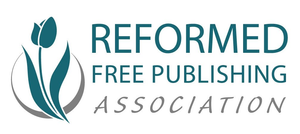
The History of the Reformed Baptism Form (1)
Reformed Free Publishing Association

This post was written by Mike Feenstra, a member of the Southwest Protestant Reformed Church in Wyoming, Michigan. Mike also teaches fifth grade at a Christian school in West Michigan. If you have a question or comment for Mike, we welcome them in the comment section on the blog.
___________
The Reformed baptism form in the back of the 1912 Psalter has a glorious history that is rich in significance. In previous articles, we have traced the work of Peter Dantheen in compiling this great work. This group of articles will focus on the history of the form from Dantheen, through Dordt, to the New World, to the 1912 Psalter.
The inspiration for this group of articles comes from Bastiaan Wielenga in his book, The Reformed Baptism Form: A Commentary. In that book, he cries out that the Reformed Churches return to the unadulterated baptism form passed at the great Synod. You can read the official version of the form on pages 11–17 of this book recently translated by the RFPA. When one reads this official version, one is quickly aware that the version in the Psalter of the Protestant Reformed Churches is very similar to that form. In the book Portraits of Faithful Saints we read: “The form we use in baptism came from his [Dantheen's] hand, although the Synod of Dordt in 1618–1619 added the section for the baptism of adults and made some minor changes in it.” (p. 235). During this four hundredth anniversary year of the Synod of Dordt, let us commemorate God's work of preserving this form which we use.
_________________
We start with the history of our baptism form from Dantheen to Dordt in two blog posts.
The ecclesiastical history of our baptism form began in the late 1560s with the work of men who had to correspond in the throes of persecution and exile. Among these important gatherings, the Convent of Wesel in 1568 holds an important place in church history as the event where Dantheen’s 1566 Psalter was approved along with the liturgical forms. “As for singing in the church, the use of the psalms as rendered by Petrus Danthenus shall be maintained in all the Dutch churches. . .” (De Ridder, Ch. 2, Art. 32). Meeter states that this article approving Dantheen’s Psalter was also an approval of the baptism form in the back of that Psalter (p. 9).
Dantheen took a leading role at this broader assembly where our baptism form first took shape as part of the “Netherlands Liturgy.” This assembly, according to official documents, took place over the border in the Holy Roman Empire, but it is regarded as a seminal event in the history of the Reformed Church in the Lowlands. The details around the event are shrouded in mystery as very few documents have come down to us. Modern scholars debate on the existence of an actual meeting in Wesel. Other than the Latin text of the decision which was discovered at the time of Dordt, there is no evidence of the travels of the delegates or mention of the assembly at successive Synods. Did the delegates sign the document in secret as was written by one man? Did the delegates all sign it at once? Was the document clandestinely delivered to the delegates one by one to be signed? It was a time of intense persecution after all. Was Dantheen the author? The answers to all of these questions are not important for our discussion (See Spohnholz p. 1–11). What is important is that Convent of Wesel happened. When one reads the contents of the document, one is immediately struck that many of our practices in worship today trace their roots to this document. The document is eminently practical in many respects. With regard to the Psalter, we even read this practical note, “Nor will it be improper to hang signs in the churches on which the manner in which the psalms should be sung . . . so that in this way the poor singing of the congregation is avoided and there will be no cause for offense or laughter on the part of unbelievers.” (De Ridder, Ch. 2, 33)
After this Convent of Wesel, the 1566 edition of Datheen's Psalter was accepted in the Lowlands along with his baptism form. As we shall see, it was a version of this form that would by God's providence eventually be translated into English for use in many Reformed churches including the Protestant Reformed Churches. In the next installment, we will trace the history of the baptism form up until Dordt.
___________
De Ridder, Richard, Ecclesiastical Manual. English Translation of Biesterveld and H.H. Kuyper’s Dutch Work. Calvin Seminary, 1982.
Hanko, Herman, Portraits of Faithful Saints. RFPA, 1999.
Meeter, Daniel James, “Bless the Lord, O My Soul”. Scarecrow Press. Lanham, MD, 1998.
Spohnholz, Jesse, The Convent of Wesel. Cambridge University Press. New York, 2017.
Wielenga, Bastiaan, The Reformed Baptism Form, A Commentary. RFPA, 2016.← Older Post Newer Post →


